Types of Renewable Energy Resources
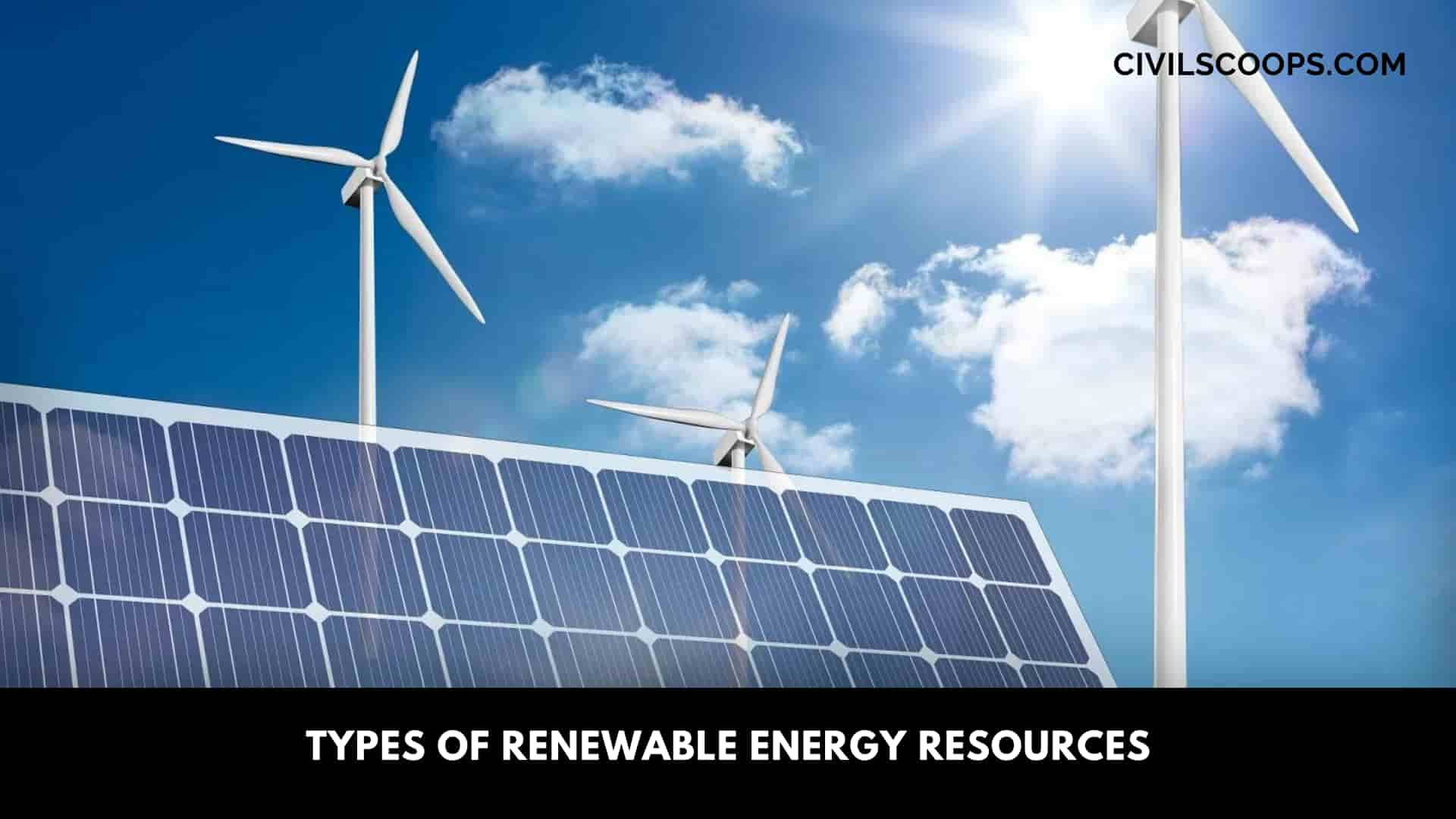
Table of Contents
Types of Renewable Energy Resources
In all over the world, scientists have found six number of renewable energy resources, which are ready to use for commercial and industrial purposes, those are in the following-
1. Solar Energy
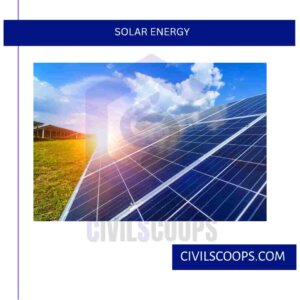
Solar energy is the primary and one of the best renewable energy resources among all other types of renewable energy. In solar energy, sunlight needs and it is available in every place. The amount of sunlight which is stored in one hour is enough for the total energy of the whole planet for one year. Solar energy is now used to operate vehicles by using solar panels. It also reduces environmental pollution.
The main advantage of using solar energy is it can be used from any location of the planet. The demand for solar energy is increasing day by day in some countries like USA, UK, India, Bangladesh, etc.
Also Read: Important Factors to Consider When Building a New Home
2. Wind Energy
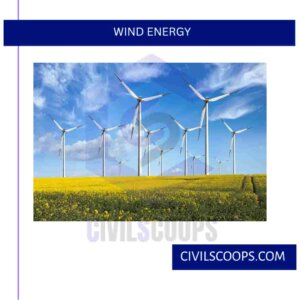
Wind energy is that type of renewable energy which is second largest, and the usage of wind energy is just after solar energy. Wind energy plant is used in the coastal areas and deserts because the wind speed of those areas are higher than other areas.
Here, turbines drive generators which generate electricity and after that electricity will be supplied to the cities. Wind turbines is only constructed for commercial purpose, and it is not constructed for personal property or personal usage.
3. Hydro Energy
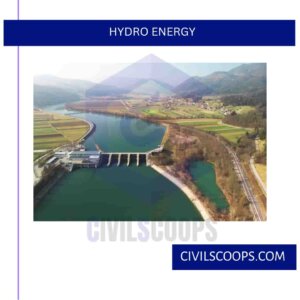
Hydro energy is the most commercially profitable renewable energy in all other renewable energy. The generating of hydro energy is very easy and economical because you just need to construct a dam or reservoir, or a barrier to store a huge amount of water, then you drive turbines through the power of water and generate electricity by driving a generator.
Hydro energy is very much reliable than solar energy or wind energy. This is the only type of renewable energy which can be stored because if you store the water, then you indirectly store the energy, so when the electricity demand is high, then you can use this energy according to the requirement. The one disadvantage of this energy is the initial cost of hydro energy is too much high.
4. Tidal Energy
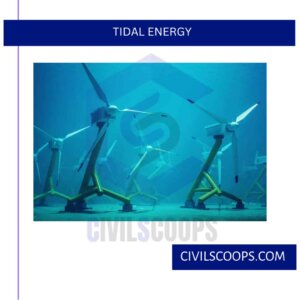
Tidal energy is a modern type of renewable energy which is very popular nowadays. In tidal energy, the energy is stored in two times per day. Tidal energy is one type of hydro energy because tide comes two times per day in a river. But if the tide is not so much strong, then the electricity generation is also very low.
5. Geothermal Energy
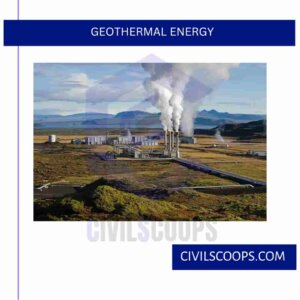
Geothermal energy is another type of renewable energy. Geothermal energy is stored in the earth, and it is generally for heating purposes of homes. Geothermal energy is a less important energy which is widely used the countries like UK, Iceland, etc.
6. Biomass Energy
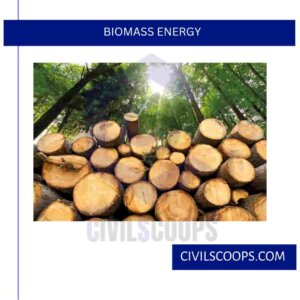
Biomass energy is the last type of renewable energy, which is basically the conversion of solid turns to electricity. In biomass energy, It includes organic compounds to generate electricity. Biomass energy is the most efficient and clean process. Biomass energy requires lowest cost energy and economical type of renewable energy.
What Are Renewable Energy Resources?

Renewable energy resources mean those natural energies which are never finished, which are sustainable, which are endless. Renewable energies are alternative energies because we generally use non-renewable energies as our primary energies. Renewable energies are the substitute of non-sustainable energy like coal energy, petroleum, etc.
Examples of renewable energies are-
- Solar energy
- Wind energy
- Tidal energy
- Biomass energy
- Geothermal energy
- Hydro energy
Why Use Renewable Energy Resources?
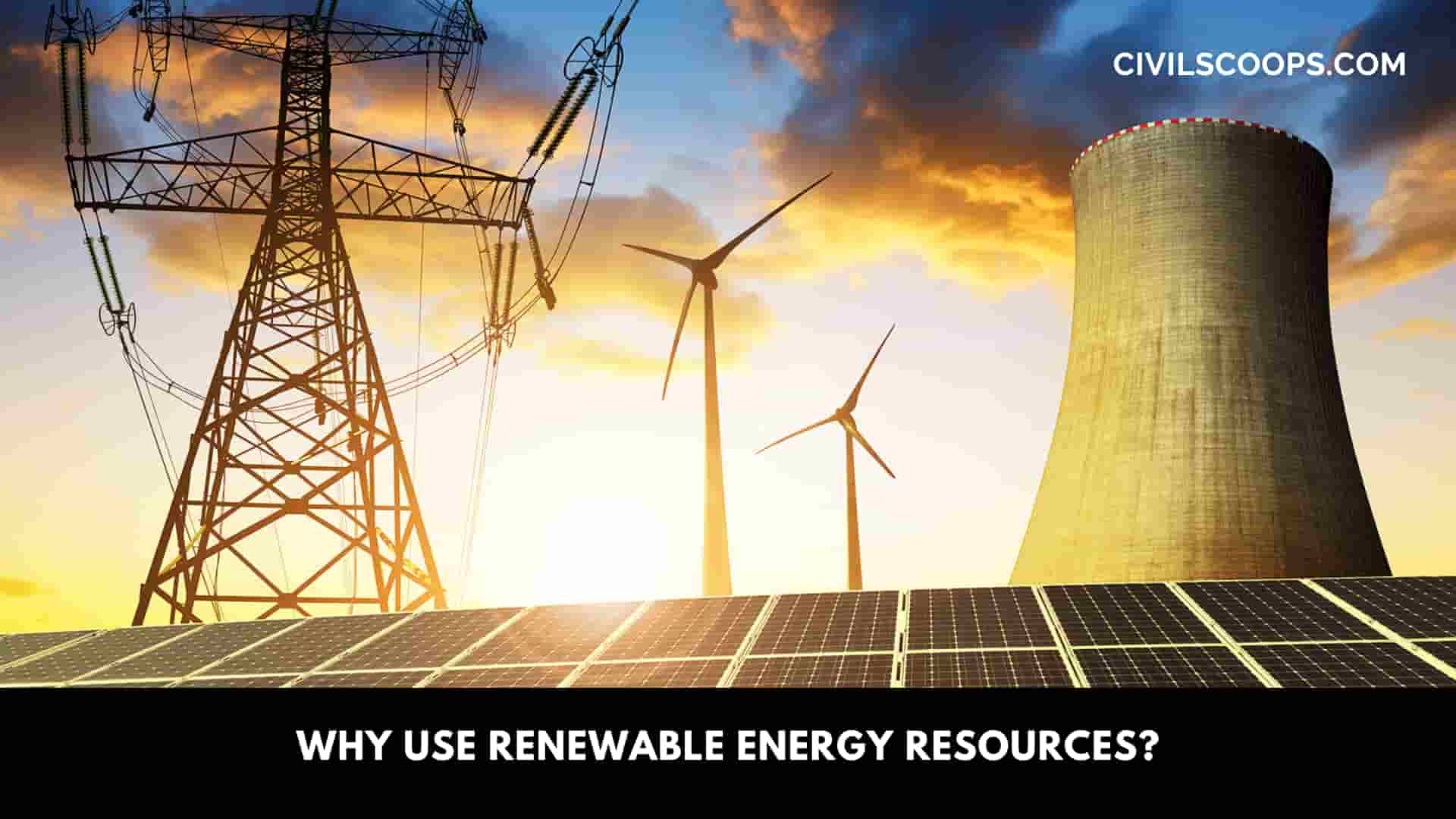
There are various reasons are there for using renewable energy resources, those are in the following-
1. Better for the Environment
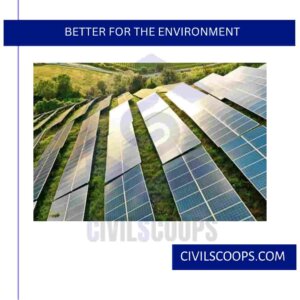
All the non-renewable energies are produced from fossil fuels, and those products damage the whole environment very much. These are the main cause of the increase global warming. Due to global warming, icebergs melt the seal level is rising day by day.
Renewable energies are more recycled and sustainable products, and it does not harm the surrounding environment. That’s why renewable energy provides a better atmosphere for living.
2. Better for Human Health

Burning of fossil uses will increase the hydrocarbon and particulate matter density in the surrounding air. But if we use renewable energies like solar energy, wind energy, tidal energy, etc, then the particulate matter density will reduce, and the air pollution will also decreased because renewable energies do not harm the environment.
3. Energy in Abundance
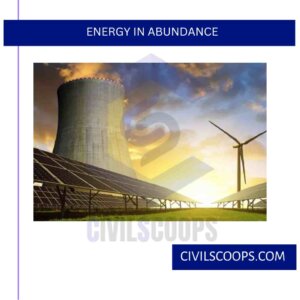
We need to use renewable energy because there are plenty amount of renewable resources. But in non-renewable resources like coal, it will definitely finished one day then, you can not produce any further energy from that.
4. Cheaper to Run

We use renewable energies because the cost of renewable energy is very low, so everyone can afford it easily. The initial cost of the renewable energy equipment are very much costly but after that it will easily be affordable for others. So, those are main reasons why we use renewable energy resources.
[su_box title=”FAQ” style=”default” box_color=”#333333″ title_color=”#FFFFFF” radius=”3″ class=”” id=””]
Types of Renewable Energy Resources
- Solar Energy
- Wind Energy
- Hydropower
- Biomass Energy
- Geothermal Energy
- Tidal Energy
Types of Renewable Energy
Here are a few common sources of renewable energy:
- solar energy. Solar energy is the most abundant of all energy resources and can even be harnessed in
- cloudy weather.
- Wind energy.
- Geothermal energy.
- Hydropower.
- Ocean energy.
- Bioenergy.
Types of Non Renewable Energy
Nonrenewable energy resources include coal, natural gas, oil, and nuclear energy. Once these resources are used up, they cannot be replaced, which is a major problem for humanity as we are currently dependent on them to supply most of our energy needs.
Types of Geothermal Energy
There are three main types of geothermal power plant technologies: dry steam, flash steam, and binary cycle. The type of conversion is part of the power plant design and generally depends on the state of the subsurface fluid (steam or water) and its temperature.
Renewable Energy and Non Renewable Energy
Sunlight and wind, for example, are such sources that are constantly being replenished. Renewable energy sources are plentiful and all around us. Fossil fuels – coal, oil and gas – on the other hand, are non-renewable resources that take hundreds of millions of years to form.
Hydro Energy
Hydropower, also known as water power, is the use of falling or fast-running water to produce electricity or to power machines. This is achieved by converting the gravitational potential or kinetic energy of a water source to produce power. Hydropower is a method of sustainable energy production.
Characteristics of Non Renewable Resources
They don’t regrow and they are not replaced or renewed. They include the fossil fuels we burn for energy (natural gas, coal, and oil). Minerals, used for making metals, are also nonrenewable natural resources. Nonrenewable natural resources are things that take longer than a person’s lifespan to be replaced.
Non Renewable Resources
A non-renewable resource is a natural resource that cannot be readily replaced by natural means at a pace quick enough to keep up with consumption. An example is carbon-based fossil fuels. The original organic matter, with the aid of heat and pressure, becomes a fuel such as oil or gas.
Non Renewable Energy
Non-renewable energy comes from sources that will run out or will not be replenished in our lifetimes—or even in many, many lifetimes. Most non-renewable energy sources are fossil fuels: coal, petroleum, and natural gas. Carbon is the main element in fossil fuels.
Solar Energy
Solar energy is radiant light and heat from the Sun that is harnessed using a range of technologies such as solar power to generate electricity, solar thermal energy, and solar architecture.
Non Renewable Energy Sources
In the United States and many other countries, most energy sources for doing work are nonrenewable energy sources:
- Petroleum.
- Hydrocarbon gas liquids.
- Natural gas.
- Coal.
- Nuclear energy.
Non Renewable Resources Definition
Nonrenewable resources are derived from the Earth— in a finite supply that can take billions of years to replenish. Historically, many nonrenewables have been relatively cheap to extract. But as their supply continues to diminish, the cost of this extraction may rise in price, leading customers to use alternative sources, such as solar and wind energy.
Importance of Non Renewable Resources
Humans extract non-renewable resources in the form of gas, liquid, or solids, and then convert them into convenient forms for easy consumption. Non-renewable resources, such as coal and oil, are the primary source of power in the world, and they are used to power vehicles, factories, and homes.
Non Renewable Energy Examples
Non-renewable energy examples include fossil fuels such as coal, crude oil (petroleum), and natural gas, as well as nuclear energy derived from nuclear fission.
Renewable and Nonrenewable Resources
Resources are characterized as renewable or nonrenewable; a renewable resource can replenish itself at the rate it is used, while a nonrenewable resource has a limited supply. Renewable resources include timber, wind, and solar while nonrenewable resources include coal and natural gas.
Sources of Energy
Primary energy sources take many forms, including nuclear energy, fossil energy — like oil, coal and natural gas — and renewable sources like wind, solar, geothermal and hydropower.
Wind Energy
Wind power is the use of wind energy to generate useful work. Historically, wind power was used by sails, windmills and windpumps, but today it is mostly used to generate electricity.
Geothermal Energy
Geothermal energy is heat energy from the earth—Geo (earth) + thermal (heat). Geothermal resources are reservoirs of hot water that exist or are human made at varying temperatures and depths below the Earth’s surface.
Biomass Energy
Biomass contains stored chemical energy from the sun. Plants produce biomass through photosynthesis. Biomass can be burned directly for heat or converted to renewable liquid and gaseous fuels through various processes.
Advantages of Solar Energy
Advantages of Solar Energy
- Solar energy is a renewable energy source and reduces carbon emissions.
- Solar energy can reduce your home’s electricity bill.
- Solar power can get you money back through Solar Renewable Energy Credits (SRECs) .
- Homes with solar panels installed may improve home value.
Advantages of Renewable Energy
Benefits of Renewable Energy
- Generating energy that produces no greenhouse gas emissions from fossil fuels and reduces some types of air pollution.
- Diversifying energy supply and reducing dependence on imported fuels.
- Creating economic development and jobs in manufacturing, installation, and more.
Renewable Resources Examples
The most popular renewable energy sources currently are:
- Solar energy.
- Wind energy.
- Hydro energy.
- Tidal energy.
- Geothermal energy.
- Biomass energy.
How to Conserve Non Renewable Resources
Actions like driving electric and hybrid vehicles, installing solar panels on and properly insulating your business and home, and using energy-efficient appliances are all smaller-scale changes that you can make to reduce your nonrenewable resource usage.
Consumption of Non Renewable Resources
The consumption of non-renewable resources, like fossil fuels, has been high due to their energy density and existing infrastructure. However, it has negative environmental impacts, contributes to climate change, and depletes finite resources. Efforts are underway to transition to renewable energy sources for a more sustainable future.
[/su_box]
[su_note note_color=”#F2F2F2 ” text_color=”#333333″ radius=”3″ class=”” id=””]
Like this post? Share it with your friends!
Suggested Read –
- How to Kill Tree Roots?
- How to Remove Stains from Wood?
- What Is Pipe Fittings | Types of Pipe Fittings
- All About Site Preparation | What Is Site Preparation | Types of Site Preparation
- What Is Damp Proof Course | Types of Damp Proofing Course | Application of Damp Proofing Course | Advantages & Disadvantages of Damp Proofing Course
[/su_note]
Originally posted 2023-06-15 09:21:40.
